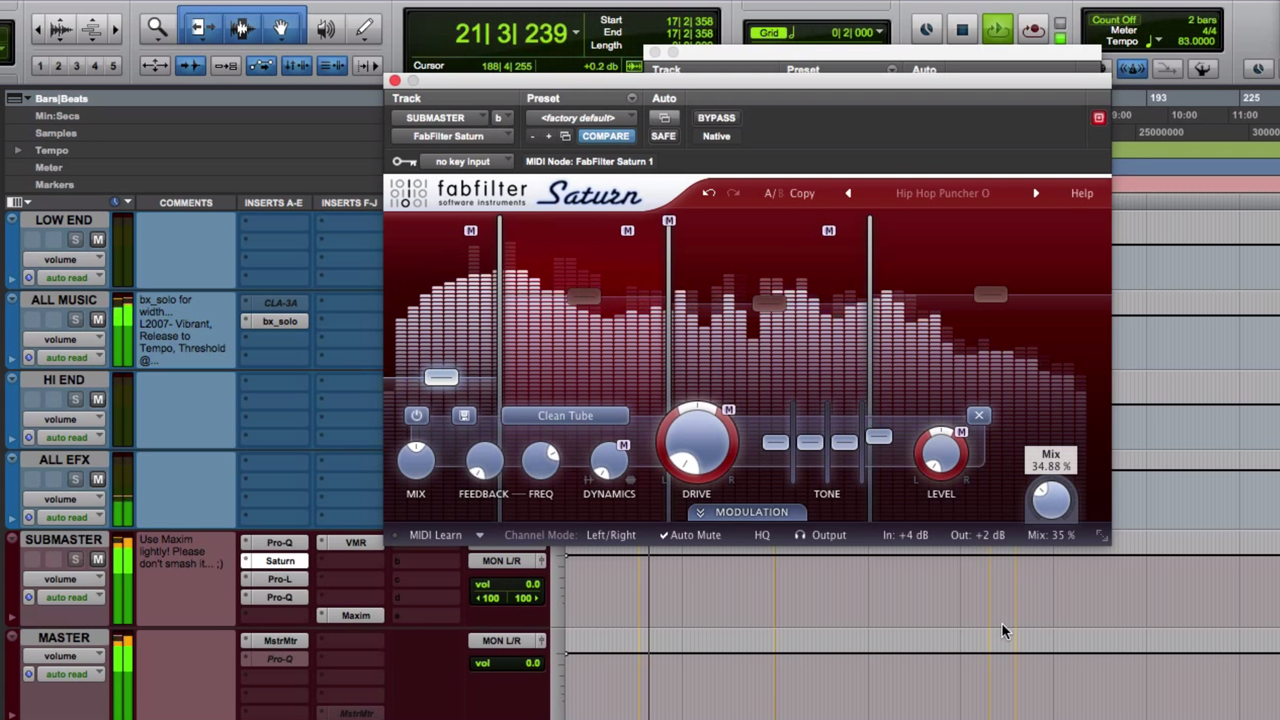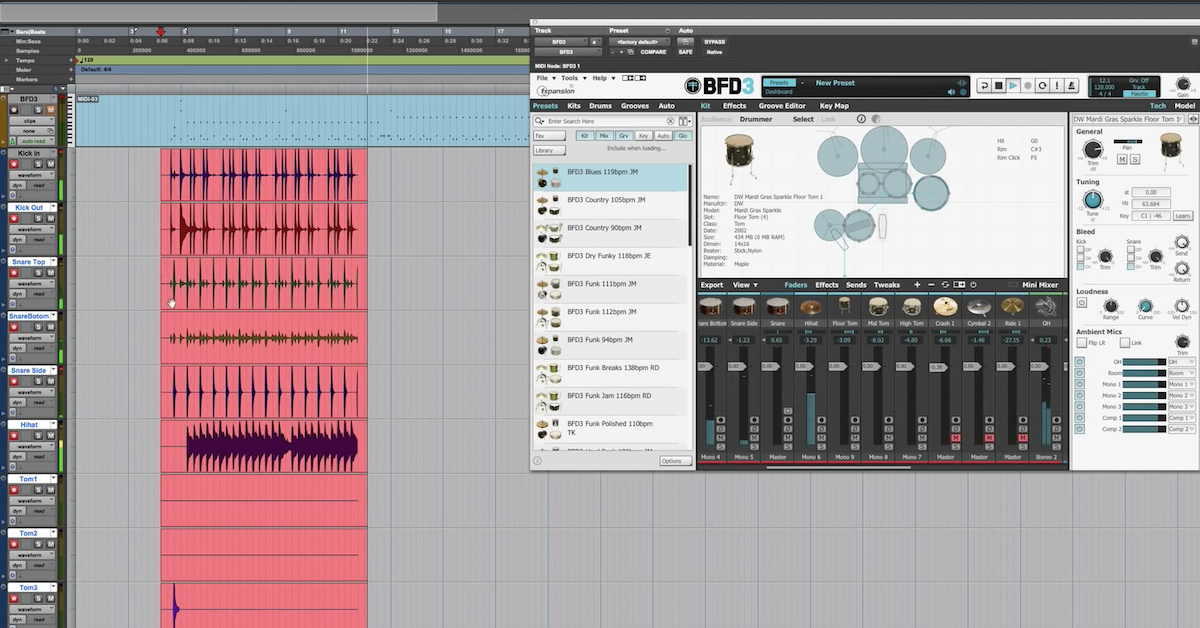7 Ways to Keep Your Ears Fresh for Mixing
Article Content
We have all made the mistake of frying our ears during session. That muffled, underwater pressure you experience after a marathon mix, as well as the “what did I do???” realization the next morning are all too familiar.
Here are a few tips to keep your ears fresh and your mixes crisp.
1) I Can Go All Night
Although seemingly obvious, the most common cause of sizzled ears and overworked mixes is fatigue.
The ear is like any muscle; it grows tired and weakens after prolonged durations of use. Despite the fact that just about every engineer knows better than to exceed their auditory limit, we tend to rip through the caution tape of mixing’s golden rule with abandon under the justification of being “almost there.”
Four hours later, with ringing ears and fifteen lanes of pointless automation, we find ourselves asking, “Why do I do this to myself?” The old adage, everything in moderation, is a poignant reminder to limit the duration of your mixing sessions.
Take a 15 minute break every two hours or so, and know your limit. Your mixes, your clients and your ears will thank you.
2) One More Time, for the Ladies
Listening to your mix as it progresses is clearly a necessity. Equally important is remembering that you do not have an infinite number of auditions to admire your handy work if you are to maintain objectivity.
Set limits to the number of times you listen to a track during your session. While there are exceptions, I limit myself to 3 full passes of my mix per session. One, at the start to get a feel of where I am starting or left off, one during the middle after a break to make sure I am on course, and one at the end of my session for closure.
It is important to add that after my final preview of the session, I resist all temptation to change things, and simply leave myself notes for the next day.
3) Duly Noted
I mentioned taking notes because it has become one of the most important aspects of my mixing ceremony.
As your mix evolves, you will likely use different monitor references to check your progress (e.g. headphones, alternate monitors, your car). During these auditions, take notes on what you feel is good, bad or needs to be changed etc.
At the beginning of your next session, work solely off of these notes. Trust your ears, and your notes. Make alterations as needed, without listening to the tracks. Then go back to your references and check your progress. This will save your ears and keep them fresh. You will also sharpen your skills on how things translate into real world auditions.
4) But It Goes to 11
The urge to blast your mix at high volumes is one we can all identify with. Sometimes it feels good to rock out to your craft. But make no mistake; this is no way to mix.
Mix your tracks at low volumes. This will save your ears as well as give you a great perspective of frequency and volume relationships. Particularly, mid to high frequencies are easier to discern at lower volumes. Funny enough, these same frequencies are the ones that cause the most ear fatigue, so keep the levels low.
Be smart, loud volume can not only fry your ears for your mix it can also cause permanent damage.
5) But I Love My Hello Kitty Ear Buds
As a person who relies on their ears for their livelihood, I take great care in protecting my hearing at all costs. (I’m that dorky guy at the concert wearing hearos).
While measures like staying away from jackhammers, loud concerts and jet engines seem obvious, there are some not so obvious things that we often don’t consider in protecting our ears. Perhaps the most important and least obvious is using ear buds to listen to music.
Small, round, cute, snug little speakers that have become the staple to listening to music for most are the last thing I would use in my precious ears. Ear buds are notorious for not only fatiguing ears, but for damaging ears in general.
It is estimated that people that listen to music on ear buds experience a 30% higher hearing loss than those that don’t. Your ear drums will be bombarded by +7 to 9 dB more from ear buds vs. traditional headphones when listening to music at the same volume.
Do yourself a favor, and avoid these little buggers. If you have to use headphones, grab yourself a pair of the old fashioned foam headphones, and keep the volume as low as possible.
6) You Can Get With This, or You Can Get With That
Using a reference track when mixing might be the best proverbial compass to guide you to the mix you were striving for. Using a similar song with a similar sound, style or structure as a reference track to A/B your mix is a practice endorsed by even the most professional engineers.
Having this reference guideline will keep you in bounds during the build of your mix. This is particularly helpful in checking a final mix, but can also help along the way to reference EQ, Panorama, dynamics, levels, reverb size and so much more.
When working with a client, it is always a good idea to ask them to provide a reference track for what they envisioned their song to sound like. Granted, you should always keep their expectations in line, particularly if you are mixing something you didn’t track, and the quality is less than ideal. Regardless, this type of A/B’ing will not only make your mix better, it will help to hone your skills as a mix engineer.
7) Ride Those Brain Waves
Sometimes our ears can get lost beyond just ear fatigue. Sometimes we can lose objectivity after listening to the same song or genre for too long.
It is always a good idea to expose your ears (and your brain) to some different frequencies and their relationships. Frequencies undoubtedly relate to one another by complementing or clashing — hence, it is always a good idea to switch things up during a mix.
For example, if I am mixing a metal album, I will listen to pop or classical just to keep my head fresh. Aside from breaking the monotony of hearing the same stuff day in and day out, your brain will hear these new sounds and reset itself.
Our brain waves vibrate at certain frequencies and the exposure to different subtle changes in music changes our mood, our ability to identify sounds, and subsequently our ability to mix. We tend to get comfortable in our studio environment, mixing by habit vs. what the track actually needs.
Conclusion
Keeping your ears fresh for a mix session goes beyond preventing your ears from tiring out.
It is equally important to keep your ears and brain exposed to different sounds, textures, tones and colors. Whether you are a novice or a veteran, these tips when practiced will help you keep your listening hat on, your head in the clouds and your feet on the ground, making you a better engineer.





